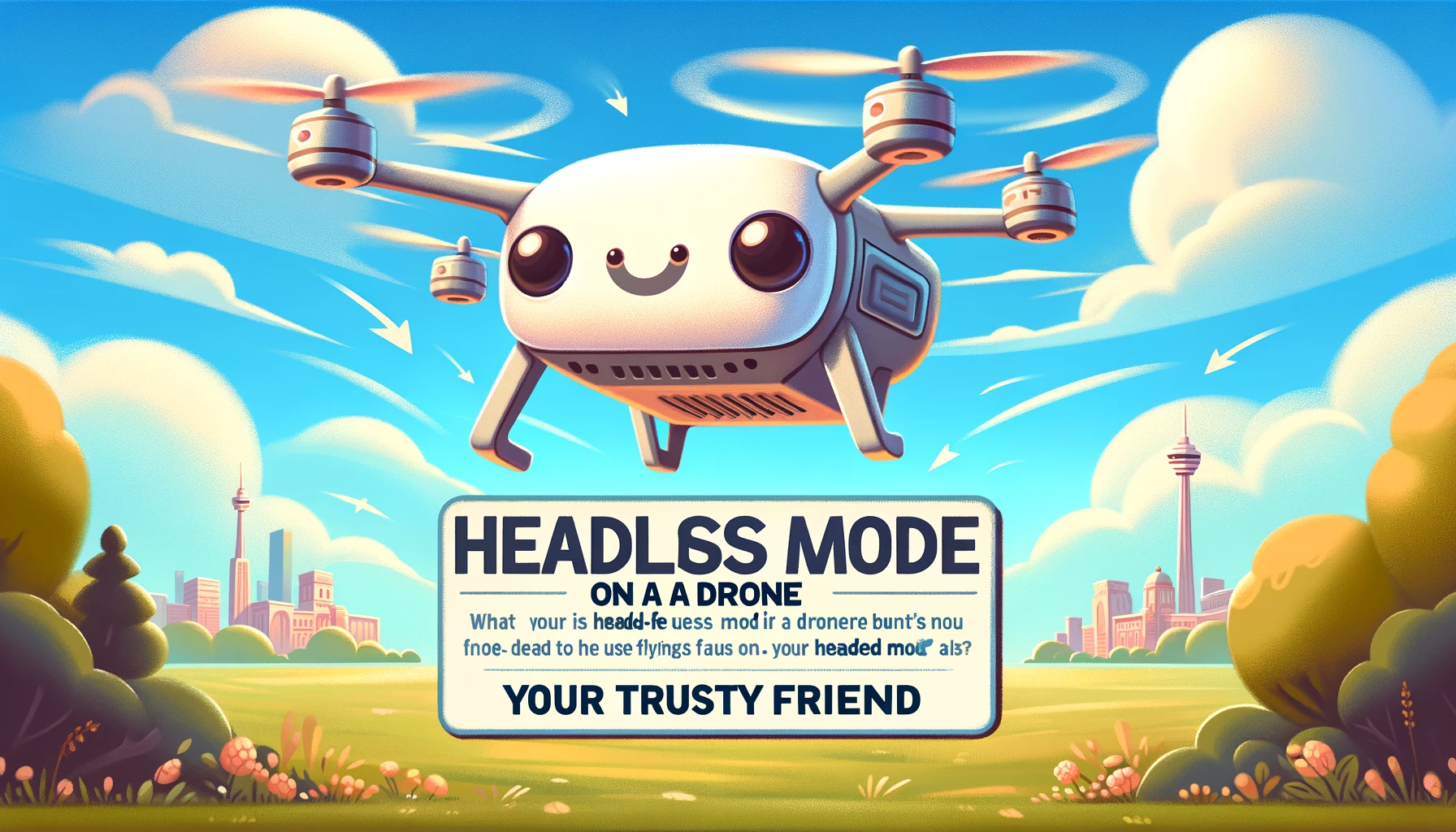What Is Headless Mode On A Drone: Your Trusty Friend
What Is Headless Mode On A Drone: Diving into the world of drones, there’s a feature that often pops up, especially among beginners and hobbyists: the Headless Mode. But what exactly is this mode? Let’s unravel this mystery in a way that’s easy to understand, with a sprinkle of humor because, let’s be honest, learning about drones should be as fun as flying them!
Understanding Headless Mode
What is Headless Mode?
Headless Mode is like that trusty friend who always knows which way is up, even when you don’t. In technical terms, it’s a feature in drones where the drone’s forward direction is always aligned with the direction of the remote control, regardless of which way the drone’s nose is pointing. Imagine you’re controlling a toy car; no matter which way the car is facing, if you push the joystick forward, the car goes away from you, and pulling it back brings the car towards you. That’s Headless Mode, but for drones!
Why the Odd Name?
The term ‘Headless’ sounds like something out of a Halloween movie, but it’s quite literal. In this mode, the drone operates as if it doesn’t have a ‘head’ or a fixed front end. The drone’s orientation becomes irrelevant to its flight direction. Spooky? A bit. Useful? Absolutely.
Headless Mode: A Beginner’s Best Friend
Easing the Learning Curve
When you’re new to drone flying, keeping track of which way your drone is facing can be as tricky as patting your head and rubbing your belly simultaneously. Headless Mode takes away this confusion, allowing beginners to focus more on controlling the drone rather than its orientation. It’s like training wheels for drone flying.
Avoiding the Dreaded Orientation Confusion
Ever tried walking in a straight line with your eyes closed? That’s how disorienting flying a drone can get without Headless Mode. It’s easy to lose track of which way is forward when your drone is a tiny speck in the sky. Headless Mode helps avoid this by simplifying controls, ensuring you don’t accidentally fly your drone into a tree or, worse, a neighbor’s window.
When Headless Mode Shines the Brightest
Great for Learning
Headless Mode is fantastic for beginners. It lets you get a feel for the controls without the added stress of orientation. Think of it like learning to swim with floaties. You get to enjoy the water without the constant fear of sinking.
Handy in Sticky Situations
Imagine your drone is far away and barely visible. With normal mode, it’s a guessing game to figure out which way it’s facing. Headless Mode turns this nerve-wracking scenario into a walk in the park. Regardless of the drone’s orientation, you can confidently control it back to safety.
The Flip Side: Limitations of Headless Mode
Not for the Pros
As you get more experienced, you’ll find that Headless Mode is a bit like riding a bike with training wheels; it’s helpful at first, but eventually, you’ll want to take it off. Advanced maneuvers and precise flying require a good understanding of your drone’s orientation, something Headless Mode doesn’t offer.
Potential Overreliance
There’s a risk of becoming too dependent on Headless Mode. It’s like relying on GPS so much that you can’t navigate your local supermarket without it. To become a skilled pilot, you’ll need to learn to fly without it eventually.
The Downsides of Headless Mode
While headless mode sounds like a silver bullet, it’s not without its drawbacks.
Over-reliance
Rely too much on headless mode, and you might never learn how to fly a drone properly. It’s like riding a bike with training wheels forever.
Not Universal
Not all drones come with headless mode. So, if you get used to it and switch drones, you might be in for a bumpy ride.
GPS Dependency
Some drones need a solid GPS signal for headless mode to work. Lose that signal, and you’re back to manual mode.
When to Use Headless Mode
Learning Phase
If you’re new to the drone world, headless mode is your best friend.
Lost Orientation
If you lose track of which way your drone is facing, headless mode can save the day.
Fun and Games
For casual flying and doing tricks, headless mode is a blast.
When to Avoid Headless Mode
Serious Flying
If you’re using your drone for photography or professional purposes, it’s best to fly the old-fashioned way.
Building Skills
Want to become a pro drone pilot? Ditch the headless mode and learn the ropes.
Conclusion:
Headless Mode is an excellent feature for beginners and those who want a more straightforward flying experience. It’s like having a drone that’s constantly whispering, “Don’t worry, I got you.” However, as you become more adept at flying, you’ll likely outgrow this mode. So, go ahead, give Headless Mode a try, but remember, the real fun in drone flying is in mastering all its aspects, even the challenging ones!
There you have it, a simple yet comprehensive look at Headless Mode in drones, served with a side of humor. Whether you’re a newbie pilot or a curious enthusiast, understanding this feature is a step closer to flying your drone like a pro!
FAQ: About What Is Headless Mode On A Drone
What exactly is headless mode on a drone?
How does headless mode benefit beginner drone pilots?
Can headless mode be used in professional drone flying?
Are there any downsides to using headless mode?
Is headless mode available on all drones?
Read More: best headphone jacks
